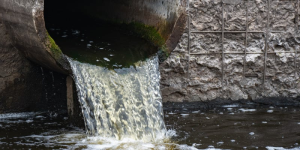Liquid Waste Removal Perth includes all matter that exists as a liquid rather than a gas or solid. This includes sewage and industrial wastewater, animal excrement and household water waste.
Properly managing liquid waste requires special care and strict compliance with regulations. Failing to do so can result in fines and damage to the community’s trust.

Preliminary treatment might not be as glamorous or high-profile as primary, secondary, and tertiary wastewater treatments, but it is an essential part of the liquid waste removal process. This first step involves removing coarse solids and other debris from the sewage or industrial wastewater to protect downstream equipment and reduce maintenance and operating costs.
To do so, screening and comminution are used to manage the size of solid particles in wastewater. Screening uses devices such as bar racks or fine screens to filter out large objects like rags, sticks, and plastic packets that could cause mechanical problems for upcoming treatment stages. Comminution grinds the larger, more solid objects into smaller pieces to prevent them from blocking pumps and other moving parts of the plant.
Grit removal is another important aspect of preliminary treatment, wherein inorganic solids like sand and gravel are separated from the wastewater. This helps to minimize wear and tear on downstream equipment and to lower the overall load on filtration systems.
In the next stage, the screened water is transferred to primary sedimentation tanks, which are large containers that allow for the settling of coarser organic materials. This step removes approximately 65 percent of BOD5 in normal domestic sewage and typically takes about 24 hours to complete.
If not for the importance of preliminary treatment, sewage systems would be plagued with clogs and other issues. For example, improperly disposed of grease and oil can lead to sewage system overflows and blockages that require costly repairs. Acidic or reactive liquid waste can also corrode pipes and other infrastructure, which is why it’s vital that these initial treatment steps are performed correctly to ensure that the main stages of wastewater processing run smoothly. Failure to follow proper procedures can lead to hefty fines and legal actions against businesses and authorities. For this reason, it’s crucial to have a comprehensive liquid waste disposal strategy in place that adheres to strict regulations and ensures the longevity of equipment and infrastructure. The right solution will depend on the type of liquid waste being processed.
Secondary Treatment
During secondary treatment, the wastewater passes through biological filtration processes. The goal of this process is to purify the liquid waste so that it can be reused, rather than disposed of. This can save companies money in the long run by cutting down on the need for fresh water sources.
Biological filtration uses microorganisms to remove organic waste and other small particles from the wastewater. The bacteria in this type of filtration consume the organic materials and turn them into byproducts, such as carbon dioxide, water and sludge. The most common method of this treatment is called the activated sludge process. In this technique, the wastewater sits in a tank or reactor under varying oxygen conditions (aerobic, anoxic or a combination of both). The bacteria then digest the organic waste, converting it to a byproduct. The resulting sludge is then removed from the tank and used to make compost or other products.
The bacteria in the sludge also consume the dissolved oxygen in the wastewater, which cuts down on the amount of oxygen that must be added to the wastewater. This helps to ensure that the filtered water does not demand so much oxygen from the environment when it is discharged into bodies of water such as rivers and lakes.
One major limitation of the biological filtration system is that it relies on aerobic microorganisms to digest the organic material. This means that the oxygen level of the wastewater will vary and not remain at a constant quantity throughout the filtration process. This can create problems in some cases, especially if the BOD level of the wastewater increases significantly. When this happens, the ecosystem of aerobic microorganisms may be unable to absorb the increased BOD. This will decrease the BOD removal efficiency of the system until oxygen levels return to normal.
In addition to the biodegradation process, some sewage treatment plants use other methods of organic waste removal. For instance, some use chemical precipitation to reduce the amount of phosphorous that is discharged into the bay. Others are able to recycle the treated wastewater for irrigation purposes, which helps to reduce the need for fresh water supplies.
Advanced Treatment
Using a combination of physical, chemical and biological processes, advanced wastewater treatment is used to purify sewage before it can be released into the environment. This helps to reduce the amount of pollutants and bacteria that are discharged into water bodies, which prevents these contaminants from affecting the health of wildlife and humans. This process may include screening of solid waste in sludge, oxidation with oxygen, biosolids management, odor control, pure oxygen activated sludge treatment, residual solids management and enhanced biological control including nitrogen and phosphorus removal.
While proper disposal is essential for liquid waste, it can be challenging. This type of waste is heavily regulated and even the smallest infraction can result in hefty fines. This is because contamination of water sources can lead to the spread of disease-causing pathogens.
The most common methods of liquid waste disposal are chemical neutralization, incineration and land application. While the latter is the most environmentally friendly, it can be costly if not done correctly. For example, if contaminated water is used for irrigation, it can result in crop losses.
Facilities can also turn nonhazardous liquid waste into compost, which provides a natural alternative to landfills. This process removes the water, leaving behind organic matter that contains vital nutrients like nitrogen, potassium and sodium. The material is then turned into fertilizer and can be used to help crops and other plants grow.
Other methods of disposal involve deep-well injection, which involves pumping the liquid waste into underground wells. This method requires suitable geological conditions, which can be difficult to find in some regions of the country.
Lastly, some facilities use a technique called membrane filtration. This process uses a series of thin filters to separate the liquid from the particles that are too large for the system to absorb. Once the wastewater has been filtered, it is then disinfected with chlorine to ensure that no pathogens remain in the water. Ultimately, this advanced technology allows for the effective decentralized treatment of wastewater and reduces the need for freshwater resources.
Incineration
Incineration is a complete combustion process that converts waste to ash, gases, and heat. It’s widely used in small countries like Japan, whose scarcity of land makes it a convenient way to dispose of garbage. In addition to reducing the volume of waste, it produces energy in the form of electricity. The ash from incineration can also be recycled into building materials, such as bricks and tiles.
Waste incineration isn’t without its drawbacks, however. As the waste burns, it releases carbon dioxide, water vapor, nitrogen oxides, and ash into the air. These gases are filtered and treated before being released into the atmosphere to reduce their impact on air quality.
The heat produced during incineration can be harnessed and used for electricity production, which can help offset the cost of operating the facility. Alternatively, it can be diverted to other uses, such as heating buildings.
Liquid waste can also be disposed of using a deep-well injection technique, in which the waste is injected into an underground well. This technique is not suitable for all sites, though. It requires a geological site with sufficient stability to prevent contamination of groundwater. It can also be difficult to determine whether the site is safe for this method.
In the case of sewage sludge and other toxic liquid waste, incineration is an effective way to destroy it. The high-temperature treatment reduces the amount of the waste and destroys harmful pathogens. It also eliminates odors that might otherwise be a nuisance for neighbors.
The waste can be disposed of in landfills or in specially designed incinerators. The choice will depend on the type of soil on which you need to dump the waste and the availability of space for landfills. Hard, stable soils are best for landfill disposal, while looser, more porous ones might cause shifting and leaks. Also, consider how much you’re willing to spend on waste disposal. If you’re working on a tight budget, incineration is an option to consider. It’s a quicker and less expensive alternative to other waste disposal methods. However, it does require a significant investment.
